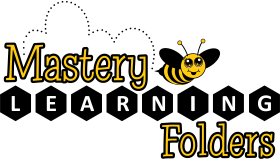My thoughts …
What is the mechanism of learning ? How do we know we have actually learnt something? It is some form of remembering – patterns, images, symbols, processes, steps, physical movement or experiences. Blooms has placed “remembering” as the first and foundational skill of thinking.
Moving on to pedagogy, what is the best way to enable students to remember, to learn?
My belief is that for any given learning task students should be provided with different approaches and perspectives, presentations based on different learning styles and multi-sensory contextual experiences. The other important factor for individual learning needs is the appropriate amount of time.
The opposite of this is rote learning, where remembering is not accompanied by context or understanding. Although mastery learning folders could be used for rote learning, it is not recommended. The best “remembering” is done when concepts are learnt through a variety of contexts – classroom learning, educational games, technology etc and the mastery learning folder is one tool available to the teacher as she directs and facilitates learning.
My perspective and experience with the use of mastery learning folders is that they are a tool that enables the teacher to differentiate the learning content and time required for selected students to remediate or extend the material being presented in the context of classroom learning.
This quote is on my home page reflects my beliefs about mastery learning:
“Bloom observed that teaching all students in the same way and giving all the same time to learn – that is providing little variation in the instruction – typically results in great variation in learning. Students for whom the instructional methods and amount of time are appropriate learn well, and those for whom the methods and time are less appropriate learn less well.
Bloom believed that all students could be helped to reach a higher criterion of learning if both the instructional methods and time were varied to match students’ individual learning needs. In other words, to reduce variation in the achievement of diverse groups of students and have all students learn well, Bloom argued that educators and teachers must increase variation in instructional approaches and learning time. Bloom labeled the strategy to accomplish this instructional variation and differentiation mastery learning.
Research evidence shows that the positive effects of mastery learning are not limited to cognitive or achievement outcomes. The process also yields improvements in students’ confidence in learning situations, school attendance rates, involvement in class sessions, attitudes towards learning and a variety of other affective measures.”
Guskey, Thomas R. (2007) Closing Achievement Gaps: Revisiting Benjamin S. Bloom’s “Learning for Mastery” Journal of Advanced Academics Vol 19 Number
